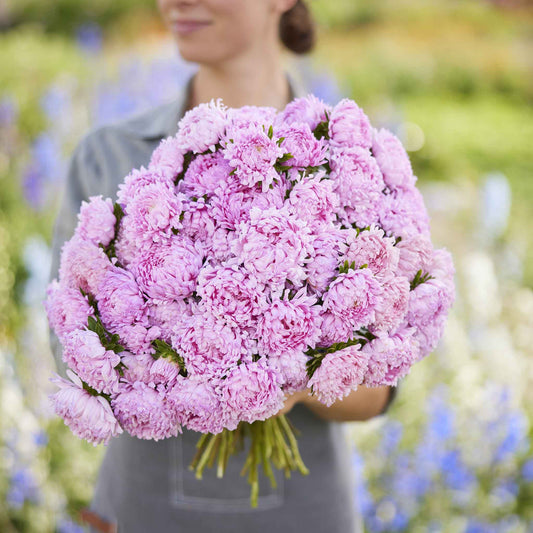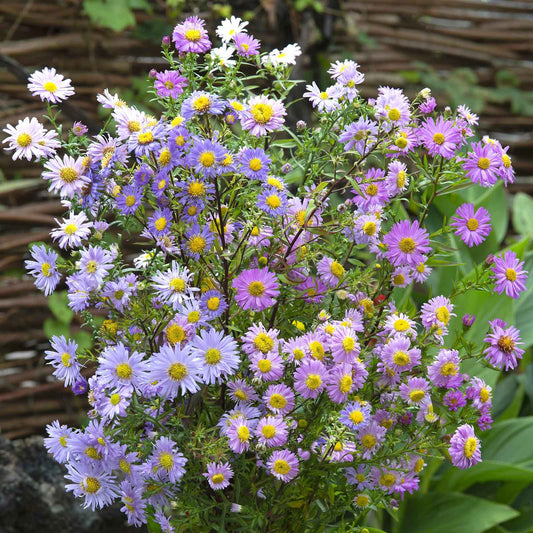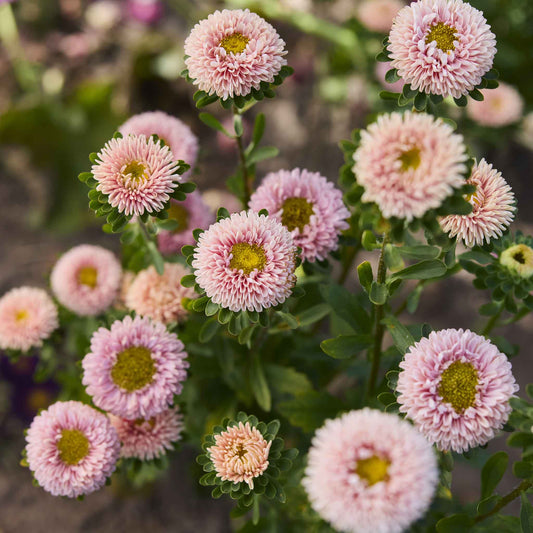-
main-collection-product-grid

Aster Seeds (Peony Duchess) - Coral Rose
Provides continuous blooms from summer until frostAster Seeds (Peony Duchess) - Coral Rose
Provides continuous blooms from summer until frostRegular price As Low As $5.99Regular priceUnit price per -
main-collection-product-grid

Aster Seeds - New Hybrids
Brings showy and long-flowering color to your late summer garden through fallAster Seeds - New Hybrids
Brings showy and long-flowering color to your late summer garden through fallRegular price $5.99Regular priceUnit price per -
main-collection-product-grid

China Aster Seeds - Matsumoto Apricot
Callistephus chinensisOut of StockChina Aster Seeds - Matsumoto Apricot
Callistephus chinensisRegular price $5.99Regular priceUnit price per
What we love about planting asters
- 19 aster seed varieties
- Cultivated worldwide as an ornamental plant
- Great for container gardens and cut flowers
- Attracts pollinators
what we love about planting aster seeds
Asters are the grand finale of the perennial garden, with vivid fall hues in pinks, purples, blues, and white. They're also one of the remaining great places for bees, butterflies, and other pollinators to find food. Beautiful blooms and a flurry of fascinating creatures are a two-for-one offer for gardeners. It encompasses around 170 species, but once contained nearly 600. The name comes from an ancient Greek word meaning star, pointing to the shape of the flower head. The two most popular types of aster are New England aster and China aster. When selecting an aster for your yard, you will want to determine the height, bloom color, and bloom time that you desire, as these vary from aster to aster.
Asters are bisexual, with both a pistil and stamens. Their flower is actually a collection of very small tubular flowers that are grouped together in a central disk, and finally surrounded by ray flowers. Often times, the disk flowers are a different color than the petals, meaning that the whole flower head looks like a single flower with the center disk being surrounded by different colored petals.
how and when to plant asters
You can grow asters through propagation or by seed. Asters should be planted after the last frost of the spring. To start your seeds indoors, get them going about six to eight weeks before you are ready to transplant them outdoors. When selecting a location to grow asters, look for an area with full sun (six to eight hours of sun per day) to partial sun (four to six hours of sun per day). Be sure you don't choose an area where the soil readily dries out. For seedlings that were sown indoors, transplant into the garden six to eight inches apart. To direct sow the seeds, spread them across the surface of moistened soil. Repeat this process several times every 10 to 14 days to ensure you have an extended blooming season.
The best conditions for asters
Maintaining asters is not difficult. However, it is important to not let the soil dry out. It is a good idea to mulch around each plant to keep weeds at bay and retain the moisture levels. If any taller flower stalks begin to fall over, the use of a stake should be considered. Do your best not to crowd aster, as to ensure good airflow between the plants. Planting your asters in different locations each year helps to reduce the spread of any potential pests or disease.
For more information about planting, growing, and caring for Asters, see the Aster Seeds Planting Guide.


